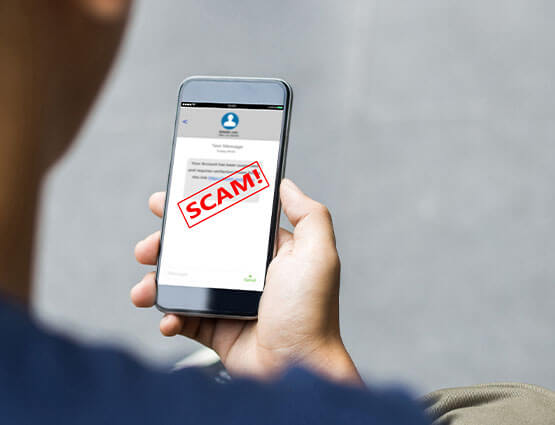Peer to Peer Payment Scams
Peer-to-peer payments, or P2P payments, allow consumers to transfer money using their bank accounts, debit cards, or credit cards through a website or mobile app such as Cash App, Google Pay, Paypal, Remitly, Venmo, and Zelle. It’s like sending cash, and the transfer usually requires just a few clicks.
Although P2P payment services can be easy to set up, simple to use, and generally secure, it’s important to be aware that criminals may try to scam you into sending money.
Be on the lookout for some of these common scenarios:
- Scammers impersonating your bank may call to alert you about “suspicious activity” on your account and direct you to send money to yourself or “the bank’s address” to reverse a transaction or to verify the account is not frozen. However, your bank will never tell you to send money to anyone, not even yourself. Criminals try to make you believe you’re sending money to yourself, but you’re actually sending money to the impostor.
- Fraudsters may reach out claiming to represent a fraud department or merchant and ask you to confirm information such as your bank account username and password, credit card or debit card data, or Social Security numbers. But do not share this information—scammers want to create a P2P account with your information, steal your identity, and gain access to your accounts.
- Scammers posing as a legitimate business may request a P2P payment for a product or service. Once they receive your money, you never receive what you paid for, and they disappear. Treat P2P payments like cash—don’t pay until you receive the product.
- You accept a work-from-home position, and the new company sends you a check to deposit, then asks you to send all or part of the funds to someone else using a P2P service. Do not deposit the check—the company is a scam and the check will bounce, leaving you on the hook for the amount of the fake deposit.
- A scammer “accidentally” sends you money on a P2P service and asks you to send the money back. Never send back the money. Instead, contact the P2P service about the error. Criminals’ accounts usually use stolen funds that the P2P payment service will eventually flag as fraud. If you send money back to the scammer, the P2P service could take funds out of your account or hold you responsible.
- Con artists may ask to borrow your phone for a contrived emergency. Do not hand over your phone to strangers, as they could make financial transfers using your payment apps and accounts.
10 dos and don’ts to protect yourself:
- Don’t send money to someone you don’t know or have never met in person.
- Don’t share bank authentication or verification numbers or your personal information with anyone who contacts you, even if caller ID indicates it’s a familiar company. Keep your account usernames and passwords, Social Security number, and bank account, debit, and credit card information to yourself. If you’re pressured or have any concerns, hang up and contact your bank directly using the number on the back of your card or on your bank statement.
- Don’t let any strangers persuade you to send money to yourself or to anyone else.
- Don’t let anyone you don’t know borrow your phone.
- Don’t do a Google search for customer service phone numbers. Scammers have created fake websites with toll-free numbers that connect to them. Only call your bank using the number on the back of your card or on your bank statement.
- Do be sure to know and trust the other party who’s receiving your money. Confirm the name, email, phone number, or applicable identifier when you transfer money. If you make a mistake, even one wrong digit, you will send your money to someone else who may not give it back. Just like handing someone cash, your bank can’t get it back for you.
- Do set up alerts to notify you of any transaction on your account.
- Do enable multi-factor authentication—a step to verify who you are, like a text with a code—for all accounts, and do not share the verification codes with anyone, including anyone claiming to be the bank.
- Do ensure that any bank or P2P app you use is updated so it is secure.
- Do be wary of accessing any financial or personal information on public Wi-Fi or mobile hotspots. They often lack security, and hackers can capture sensitive personal information on these open servers.
If you are a victim of a P2P payment scam:
- Notify the P2P payment platform
- Contact your bank
- Immediately file a complaint with the FBI's Internet Crime Complaint Center (IC3).
For more information, check out tips about using P2P payments from the ABA Foundation.
Content provided by the American Bankers Association.












